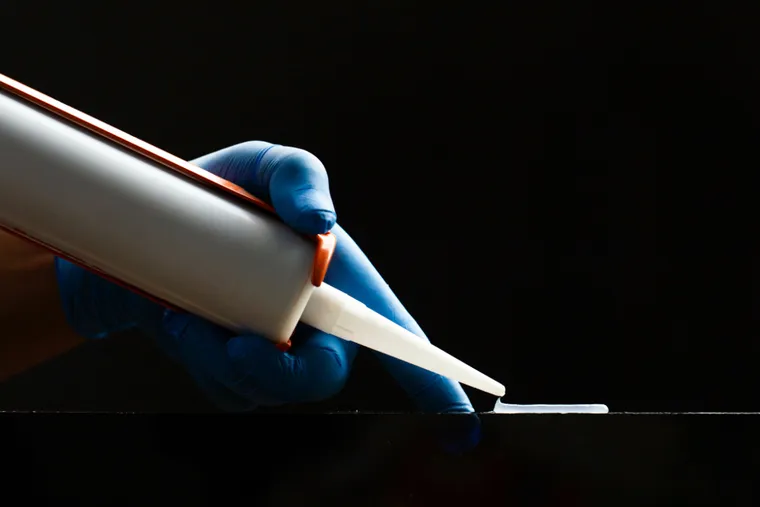Reducing air leaks in your home is a simple, cost-effective way to lower heating and cooling costs, improve comfort, and improve indoor air quality. Techniques such as caulking and weatherstripping help seal gaps and cracks, yielding quick returns on investment, often within a year.
Proper air sealing also helps prevent moisture problems, protecting both the health of occupants and the structural integrity of the home.
Strategies for Air Sealing
Good air sealing is key to keeping your home cozy and energy-efficient. Let’s explore some simple techniques that can make a big difference.
Understanding Air Leakage
Air leakage occurs when outside air enters and conditioned air escapes through cracks, openings, and gaps in your home's envelope.
Uncontrolled air leakage can lead to:
- Drafts and cold spots
- Higher energy bills
- Poor indoor air quality
- Moisture-related problems, including mold and structural damage
If you're a real estate professional, taking continuing education (CE) courses on topics like this can help you assist clients in understanding the importance of energy-efficient practices, including air sealing and weatherization.
Steps to Seal Air Leaks
Sealing air leaks might sound like a big task, but with a few easy steps, you can tackle those drafts and boost your home’s comfort in no time.
- Detect Air Leaks: Conduct a home energy audit or blower door test for a comprehensive assessment. You can also inspect for gaps and cracks around doors, windows, outlets, and other entry points.
- Apply Caulking: Seal stationary components like window frames and plumbing penetrations with caulk. Choose caulking material based on the type of surface and desired durability.
- Use Weatherstripping: Install weatherstripping on movable parts like doors and operable windows. Select weatherstripping materials appropriate for high-friction areas for maximum longevity.
- Seal Larger Gaps: Use foam sealants for wider cracks around baseboards, windows, and plumbing.
Tips for Air Sealing Common Areas
- Seal plumbing and ductwork penetrations.
- Add foam gaskets behind outlets and switch plates.
- Close gaps around chimneys and flues with fire-resistant materials.
- Replace single-pane windows with double-pane, low-emissivity options.
Moisture Control
Controlling moisture helps enhance the effectiveness of air sealing while reducing condensation, mold growth, and structural damage. Moisture control measures include:
- Ventilation: Maintain proper airflow to prevent moisture buildup in attics, crawlspaces, and walls.
- Insulation: Install vapor diffusion retarders in appropriate areas to prevent condensation in ceilings, walls, and floors.
- Foundation Protection: Implement measures like sloping the ground away from your home, using drainage planes, and sealing cracks in basements and crawlspaces.
Ventilation: Fresh Air & Reducing Energy
After sealing air leaks, proper ventilation is critical to maintain indoor air quality and manage moisture. Options include:
1. Natural Ventilation
This relies on uncontrolled air movement through windows, doors, and cracks. While cost-effective, it may not provide consistent ventilation in tightly sealed homes.
2. Spot Ventilation
Localized exhaust fans in kitchens and bathrooms help remove moisture and pollutants directly at the source.
3. Whole-House Ventilation
These systems provide uniform airflow and include:
- Exhaust Systems: Expel stale air to reduce pressure inside the home.
- Supply Systems: Introduce fresh air, pressurizing the home.
- Balanced Systems: Equalize intake and exhaust for optimal airflow.
- Energy Recovery Systems: Reduce heating and cooling costs by transferring heat or coolness between incoming and outgoing air.
Weatherization Techniques
Weatherization is all about making your home ready to handle whatever Mother Nature throws its way. These simple techniques can help you save energy and stay comfortable year-round.
1. Caulking
Caulking seals cracks and gaps less than ¼ inch wide between stationary components like window frames. Select caulks based on durability, flexibility, and environmental factors.
Popular Caulking Materials:
- Silicone: Long-lasting and flexible but may require mineral spirits for cleanup.
- Expandable Foam: Ideal for larger gaps, though it may require painting for UV protection.
- Butyl Rubber: Durable and effective for sealing windows, doors, and flashing.
2. Weatherstripping
Weatherstripping is applied to movable components like doors and operable windows to reduce drafts. Select materials based on wear resistance, location, and type of movement.
Common Weatherstripping Options:
- Tension Seal: Durable and invisible; used for sliding windows and doors.
- Felt: Easy to apply but less durable.
- Door Sweeps: Installed along door bottoms to seal gaps.
- Magnetic Strips: Provide excellent seals for windows and doors.
For real estate agents, if you're looking for a real estate license renewal course, consider a real estate course that includes topics on sustainability and efficient home maintenance, including the importance of caulking and weatherstripping.
DIY Air-Sealing and Weatherization Tips
- Clean all surfaces before applying caulk or weatherstripping.
- Install materials snugly to make sure they're sealed properly.
- Inspect and maintain seals annually to address wear and tear.
- Combine air sealing with insulation upgrades for maximum energy savings.
Professional Home Energy Audits
To maximize the effectiveness of your air sealing efforts, consider hiring a professional energy auditor. Auditors can identify hidden air leaks using specialized tools like blower doors and infrared cameras.

